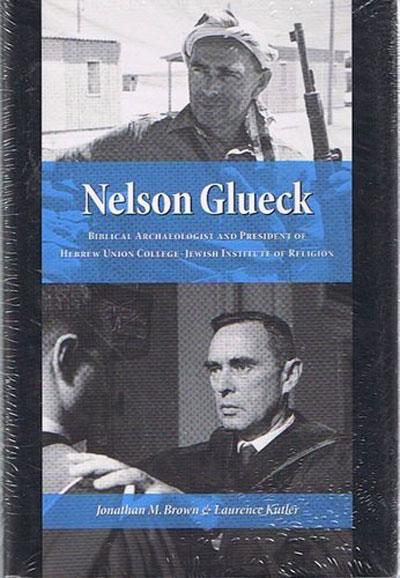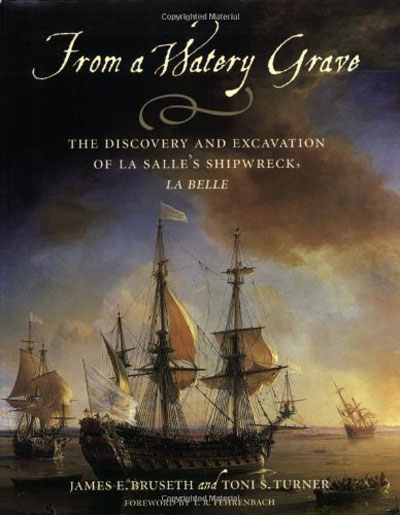 The Olmecs: America’s First Civilization by Richard A. Diehl (New York: Thames & Hudson, 2005) 208 pp., 152 illus, 20 in color, paper $22.50 ISBN 0-500-28503-9
The Olmecs: America’s First Civilization by Richard A. Diehl (New York: Thames & Hudson, 2005) 208 pp., 152 illus, 20 in color, paper $22.50 ISBN 0-500-28503-9
Reviewed by Greg Borgstede, a Research Associate in the Museum’s American Section.
The Olmecs of the humid lowland Mexican Gulf Coast were one of the earliest civilizations in Mesoamerica. Their precocious developments, as well as their early manifestation of many typical traits that later appear throughout Mesoamerica, have led some to label them the region’s “mother culture.” Impressive art—including the famous colossal heads—and large earthen pyramids have also made them intriguing beyond archaeological circles.
This book is a recent publication in the Ancient Peoples and Places series of short introductory texts on a culture group or region by a leading scholar, usually with numerous, effective images. The Olmecs continues this effort, providing an archaeologically sound introduction to Olmec culture while highlighting their important artistic and cultural innovations. Richard A. Diehl, a respected Olmec scholar, offers a balanced introduction to Olmec studies through a well-organized text and abundant full-color and black and white images. This volume also complements Mexico, by M. Coe and R. Koontz in the same series.
The rapidly changing nature of Olmec studies means that this book should be read only as an introduction, followed by more in-depth studies that discuss current controversies and issues. While Diehl’s style is occasionally informal, he conveys the important bases on which current understandings are built while presenting his own opinions on less definitive conclusions in Olmec studies.
Following a brief introduction the first chapter summarizes the history of archaeological research in the region, the varying perceptions different pre-Columbian groups have had of Olmec culture, and a snapshot of pre-Olmec inhabitants in the Olmec heartland. The next two chapters present the Olmec culture as understood through two of its best-known sites, San Lorenzo and La Venta. These chronologically arranged chapters are followed by two more on Olmec culture. The first concerns daily life, including agriculture, village life, social organization, and religion, while the second focuses exclusively on Olmec artwork, including the monumental colossal stone heads, sculptures and figurines, and masks. The next two chapters examine Olmec—as a people, a culture, or a concept—outside of the heartland, in both eastern and western Mesoamerica. The book closes with a chapter on the epi-Olmec who occupied the heartland after the decline of the earlier centers and who developed their own writing system. After an epilogue, there are two useful appendices; one for visiting Olmec sites and another for further reading.
 Nelson Glueck: Biblical Archaeologist and President of the Hebrew Union College Jewish Institute of Religion by Jonathan M. Brown and Laurence Kutler (Detroit, MI: Wayne State University Press, 2006) 272 pp., 17 illus, cloth $30.00 ISBN 0-87820-119-X
Nelson Glueck: Biblical Archaeologist and President of the Hebrew Union College Jewish Institute of Religion by Jonathan M. Brown and Laurence Kutler (Detroit, MI: Wayne State University Press, 2006) 272 pp., 17 illus, cloth $30.00 ISBN 0-87820-119-X
Reviewed by Benjamin Porter, Co-Director of excavations at Tall Dhiban, a Jordanian archaeological site that Nelson Glueck investigated in the 1930s.
This engaging biography explores the career of Nelson Glueck, one of the 20th century’s most important—and intriguing— Middle Eastern archaeologists. A Cincinnati native who earned a doctorate in Biblical literature at Germany’s University of Jena, Glueck later studied archaeology in Mandate Palestine under William Albright, the grandfather of Biblical archaeology. With Albright’s training along with a local guide, a Bible, and a rifle, Glueck braved the unstable territories east of the Jordan River, surveying and excavating the dilapidated ruins of Moab and Edom, ancient Israel’s antagonistic neighbors. Despite his commitment to Biblical archaeology and his love for field research, Glueck could not resist the call to assume the office of Hebrew Union College’s presidency, a powerful position in American Reform Judaism. Under his guidance, the college expanded its influence and endowment; by the time of his death only months prior to his scheduled retirement, the college had established three new branches, first in New York City and later in Los Angeles and Jerusalem.
This book’s strength lies in the fact that the authors draw on original source materials like letters, photographs, interviews, and excavation reports to describe Glueck’s ambitious scholarly and administrative career. The reader learns that although he was a serious scholar of Biblical history and Near Eastern archaeology, Glueck was also deeply committed to communicating his research to the public. His books detailing his discoveries in Jordan and his excavations of Israelite copper factories and Nabataean temples were quite popular with archaeological enthusiasts in the 1950s. His willingness to compose such popular works afforded him much popularity. That he read the benediction at Kennedy’s 1961 presidential inauguration and his picture appeared on a 1963 Time magazine cover helps place the enormity of Glueck’s public profile into perspective.
Glueck’s popularity no doubt makes him an interesting and complex subject for a biography. And yet the book’s authors have missed an opportunity to pry further into more contentious elements that demonstrate why Glueck is worth writing and reading about. During World War II, for example, Glueck served as a Middle East field operative for the Office of Secret Services—the CIA’s predecessor. Glueck received—and indeed still receives today—criticism for his willingness to use archaeology as a cover for intelligence-gathering. Glueck, in fact, never hesitated to employ his role as archaeologist surreptitiously, whether spying on Axis sympathizers in the Middle East or convincing politicians of the role that archaeology could play in the emerging State of Israel. Although Glueck’s role as spy and statesmen does receive attention in the book, I would have welcomed the authors’ speculations on Glueck’s motivations beyond what superficial documents may suggest.
Despite its shortcomings, however, this book is required reading for students of Near Eastern and Biblical archaeology. It will also be attractive to readers who enjoy biographies of archaeologists, explorers, and Jewish intellectuals.
 From a Watery Grave: The Discovery and Excavation of La Salle’s Shipwreck, La Belle by James E. Bruseth and Toni S. Turner (College Station, TX: Texas A&M University Press, 2005) 176 pp., 126 color and 13 b/w photos, cloth $39.95 ISBN 1-58544-347-6
From a Watery Grave: The Discovery and Excavation of La Salle’s Shipwreck, La Belle by James E. Bruseth and Toni S. Turner (College Station, TX: Texas A&M University Press, 2005) 176 pp., 126 color and 13 b/w photos, cloth $39.95 ISBN 1-58544-347-6
Reviewed by James R. Mathieu, Editor of Expedition and a Research Associate in the Museum’s European Archaeology Section.
At the 2006 Society for American Archaeology meetings in San Juan, Puerto Rico, I had the pleasure of meeting the primary author of this book during a roundtable luncheon on “Publishing and Presenting Archaeology for a Public Audience.” As the editor of Expedition, I am always excited to come across archaeology written for popular consumption, especially by archaeologists themselves. Therefore, I requested a copy of this book to review in Expedition. I am glad I did! This book was excellent—a wonderful mix of good scholarship, interesting storytelling, and stunning illustrations.
The book begins with the story of La Salle’s endeavors in the New World on behalf of the French and the loss of two of his ships along the coast of Texas in the late 17th century. The focus then shifts to the fascinating tale of the search for and discovery of one of the ships, La Belle, in the shallow waters of Matagorda Bay in 1995. The archaeologists then built a cofferdam around the wreck to excavate the ship’s remains, its special cargo, and even some of the crew. With over 100 colorful maps, drawings, paintings, reconstructions, and photos, the book does a wonderful job taking you back to the 17th century and along for the (sometimes stormy) ride in excavating a sunken archaeological site. In easily accessible language the authors make great use of numerous sidebars and text boxes to explore the significance of their archaeological discoveries and to flesh out La Salle’s world. I highly recommend this book for anyone interested in archaeology, the Age of Discovery, and/or seafaring. I gave my copy to an old sailor and Coast Guardsman—my Dad.
